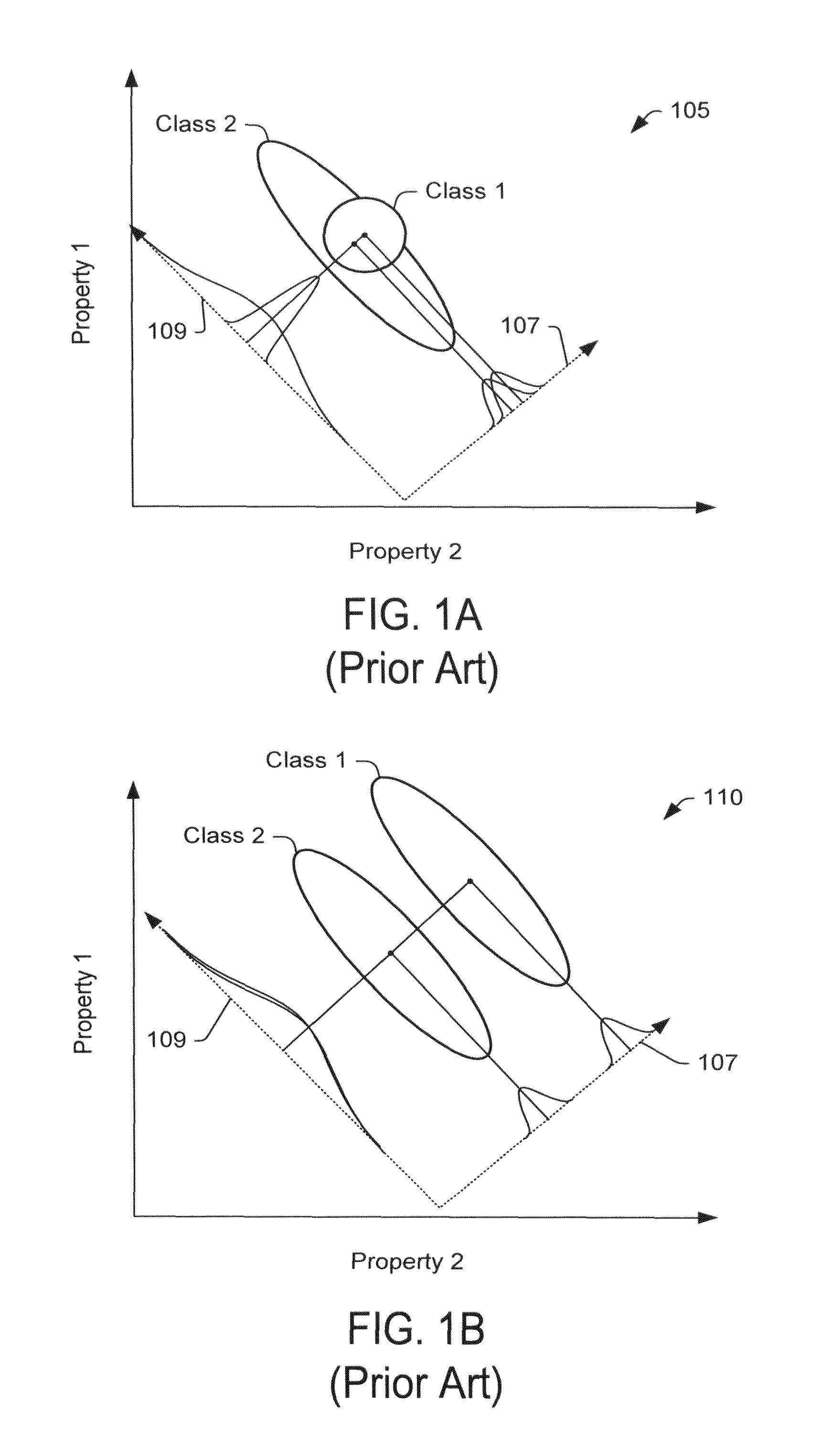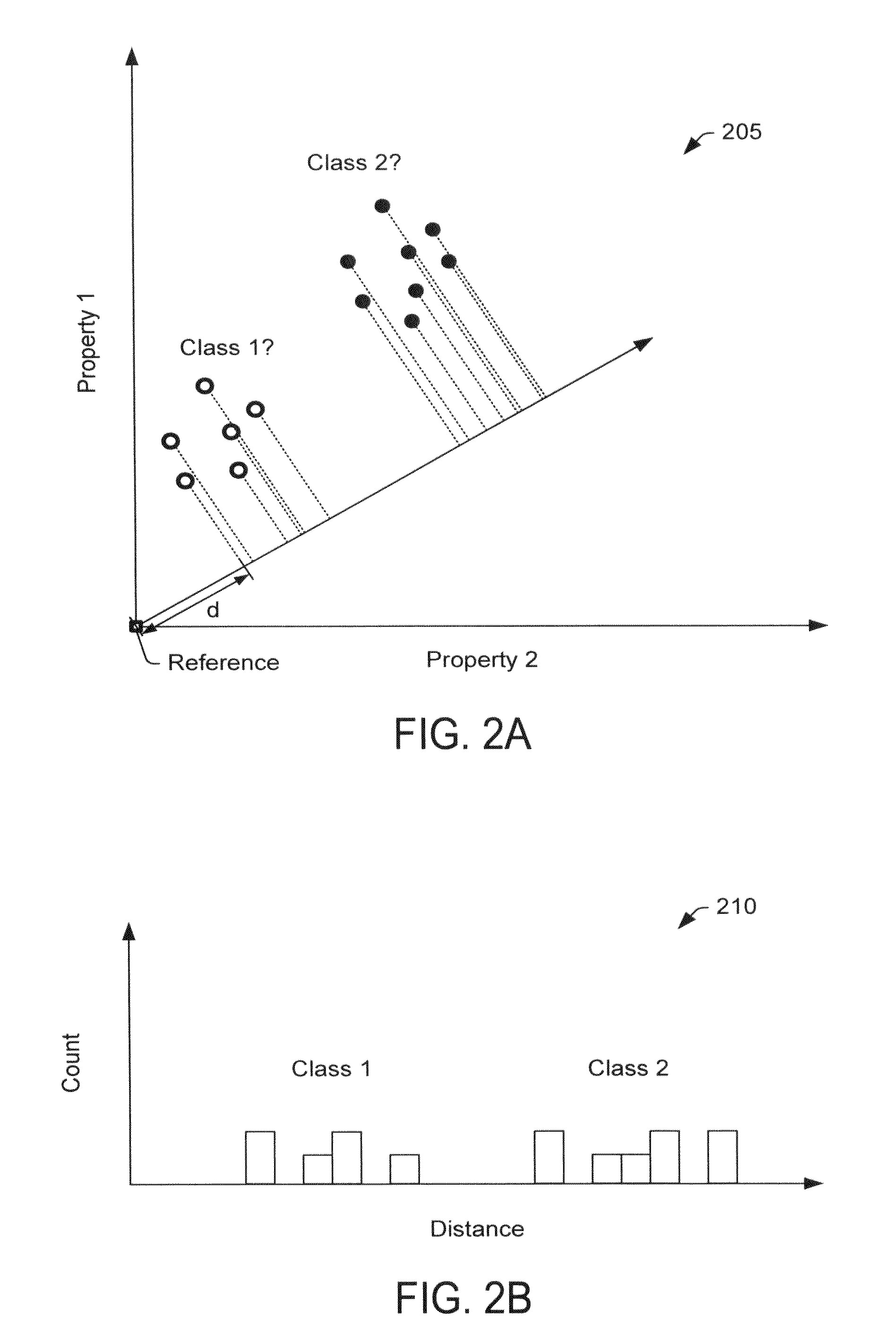Iterative fisher linear discriminant analysis
a discriminant analysis and fisher technology, applied in the field of classifiers, can solve problems such as insufficient flexibility of the plane (or its equivalent) positioned normal to a discriminant direction, data classification problems are commonly encountered, and the performance of the classifier is degraded
- Summary
- Abstract
- Description
- Claims
- Application Information
AI Technical Summary
Problems solved by technology
Method used
Image
Examples
examples
[0107]An example of practical utility of the various exemplary implementations described herein can be illustrated with a color classification problem, which starts with a color image in which each pixel is represented by a color vector. The vector is three-dimensional, corresponding to a red channel value, a green channel value, and a blue channel value. The task is to mark some colors as desired and others as undesired and then to achieve classification of the image into wanted and unwanted elements. The unwanted elements are erased to transparency, leaving only the desired elements visible in the image. Such a task may be accomplished by manually erasing individual pixels so that only the desired ones remain. However, this is an extremely laborious process requiring much dexterity and patience. This may be appreciated when it is borne in mind that digital camera images, for instance, contain several millions of pixels. Much time and effort could be saved if it were possible to ma...
PUM
 Login to View More
Login to View More Abstract
Description
Claims
Application Information
 Login to View More
Login to View More - R&D
- Intellectual Property
- Life Sciences
- Materials
- Tech Scout
- Unparalleled Data Quality
- Higher Quality Content
- 60% Fewer Hallucinations
Browse by: Latest US Patents, China's latest patents, Technical Efficacy Thesaurus, Application Domain, Technology Topic, Popular Technical Reports.
© 2025 PatSnap. All rights reserved.Legal|Privacy policy|Modern Slavery Act Transparency Statement|Sitemap|About US| Contact US: help@patsnap.com



